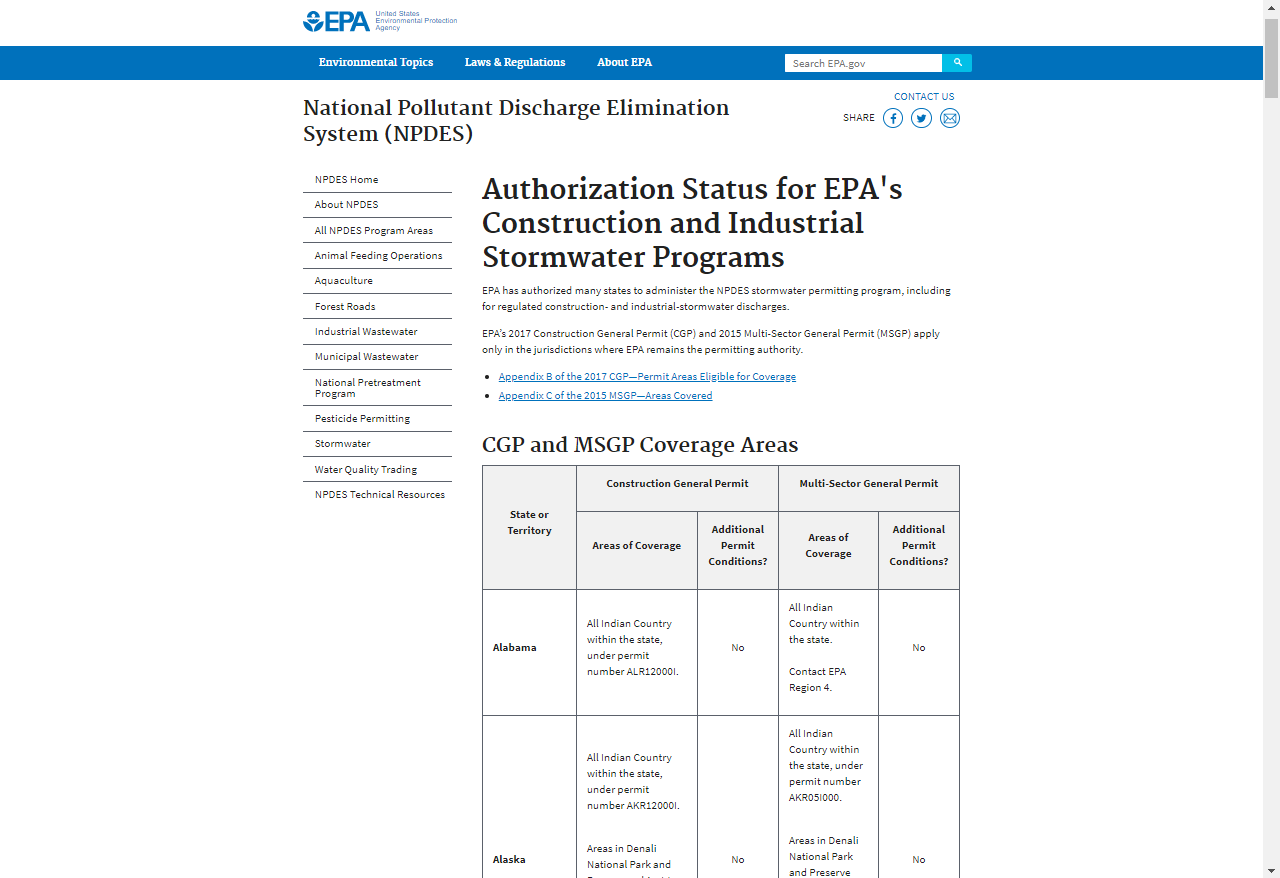
How to Avoid Being Fined for Improper Stormwater BMP Maintenance in Your State or Territory

By Brandon Kerman, July 24th, 2020
In accordance with the Clean Water Act of 1972, the NPDES Stormwater Program is designed to prevent stormwater runoff from washing harmful pollutants into local surface waters.
If you are someone in the construction, industrial, or environmental landscape, it is likely that you are familiar with stormwater and the various concepts related to the topic.
However, if you’ve ever been involved in the process of achieving regulatory stormwater compliance, you may have discovered that it has the potential to be difficult, tedious, or confusing at times.
One of the fundamental reasons for this is the fact that best-management-practice (BMP) requirements can vary depending on the federal, state, or local level of enforcement.
Knowing the correct level of enforcement when implementing BMPs can be tricky if you are unsure.
Other than having the potential to generate stormwater pollution, improper installation and/or improper maintenance of stormwater BMPs can put the operator at risk of violations, which can result in costly fines in the long run.
This article will explain the differences between the levels of enforcement and outline how to know which one to follow so that you can maintain stormwater compliance.
. . .
Note: If you are the operator of a regulated small municipal separate storm sewer system (MS4), the Storm Water Phase II Final Rule requires you to obtain a National Pollutant Discharge Elimination System (NPDES) permit.
This is a very important requirement to fulfill before doing anything else, so if you have not yet completed this step, refer to the EPA’s website with instructions on how to obtain the correct permit(s).
If you’ve already completed this step, keep reading.
. . .
Levels of Enforcement
At the federal level, the National Pollutant Discharge Elimination System (NPDES), created in 1972 by the Clean Water Act, is authorized to state governments by EPA to perform many permitting, administrative, and enforcement aspects of the program – including for regulated construction and industrial stormwater discharges.
So, although the EPA holds the primary governing authority, most states are authorized to implement the stormwater NPDES permitting program.
However, the EPA remains the permitting authority in a few states, territories, and on most land in Indian Country.
So, the permitting authority depends on which state or territory you are in.
View your state/territory’s authorization status here.

This chart provided by the EPA will provide information for your state or territory, such as areas of coverage and whether or not you have any additional permit conditions regarding a Construction General Permit (CGP) or a Multi-Sector General Permit (MSGP).
. . .
How Does This Apply to BMPs?
Depending on your state or territory’s permitting authority, you may be required to obtain additional permits.
If so, the chart will refer you to the correct document (CGP or MSGP), where you can find the specifications for correct BMP installation, maintenance, and compliance for your area.
If you'd rather not refer to the chart, check out our article for which states have their own stormwater regulations.
If your state or territory does not require you to obtain any additional permits, you can just refer to the National Menu of Best Management Practices (BMPs) for Stormwater.
First released in October 2000, the menu of BMPs is based on the stormwater Phase II rule's six minimum control measures.
The EPA has found the practices listed in the menu of BMPs to be representative of the types of practices that can successfully achieve the minimum control measures.
The menu provides information regarding public education, public involvement, illicit discharge detection and elimination, construction, post-construction, and pollution prevention/good housekeeping measures.
Staying up-to-date and familiarizing yourself with this menu will keep you informed and save you a lot of hassle when it comes to the process of achieving regulatory stormwater compliance.
. . .
What About BMP Manufacturer Requirements?
When purchasing BMP materials, it is likely that the manufacturer of those materials may have their own set of instructions or requirements for correct installation or maintenance.
Deciding whether or not to follow the manufacturer’s requirements is where things can fall into a bit of a “gray area” for the operator.

While most BMP material companies design their products in accordance with EPA’s requirements for maintaining stormwater compliance, sometimes these designs can fall out of the scope of your state or territory’s requirements.
When this happens, the operator can face a difficult choice.
On one hand, following the manufacturer’s requirements can assure the operator that the BMP will function correctly. This allows the operator to avoid further financial and operational hardships from having to replace faulty or incorrectly installed materials.
On the other hand, if the manufacturer’s requirements do not meet EPA requirements (depending on state/territory), following the manufacturer’s requirements instead will lead to violations and/or fines per the level of enforcement.
While it may seem easier or cheaper in the moment to go against EPA’s requirements, the truth is that cutting corners like this will lead to further worse hardships.
So, it is recommended that the operator always follows EPA’s requirements in order to achieve regulatory stormwater compliance.
Refer to the National Menu of Best Management Practices (BMPs) for Stormwater and/or view your state/territory’s authorization status to make sure you are purchasing BMP materials that are in compliance with EPA’s requirements.
. . .
Got any other tips, tricks, or ways to maintain stormwater BMP compliance in your state or territory? Tweet us @BIWSafety!
Feel free to contact us at (702) 897-4906.